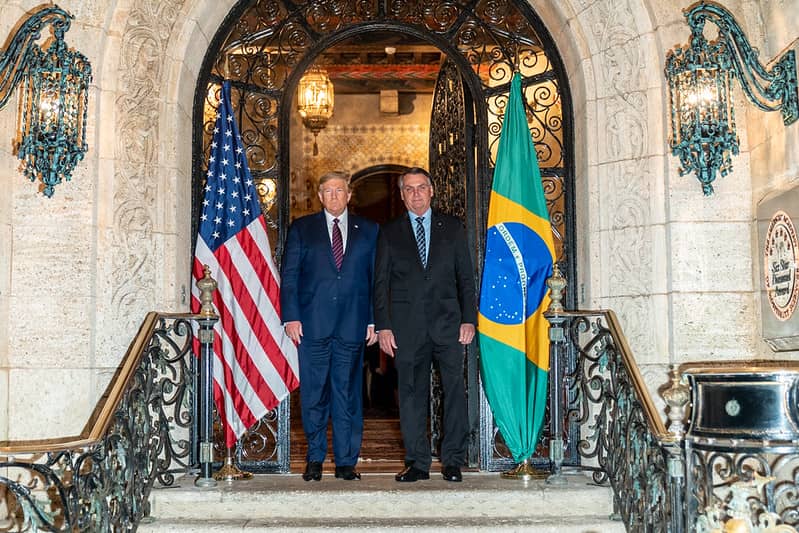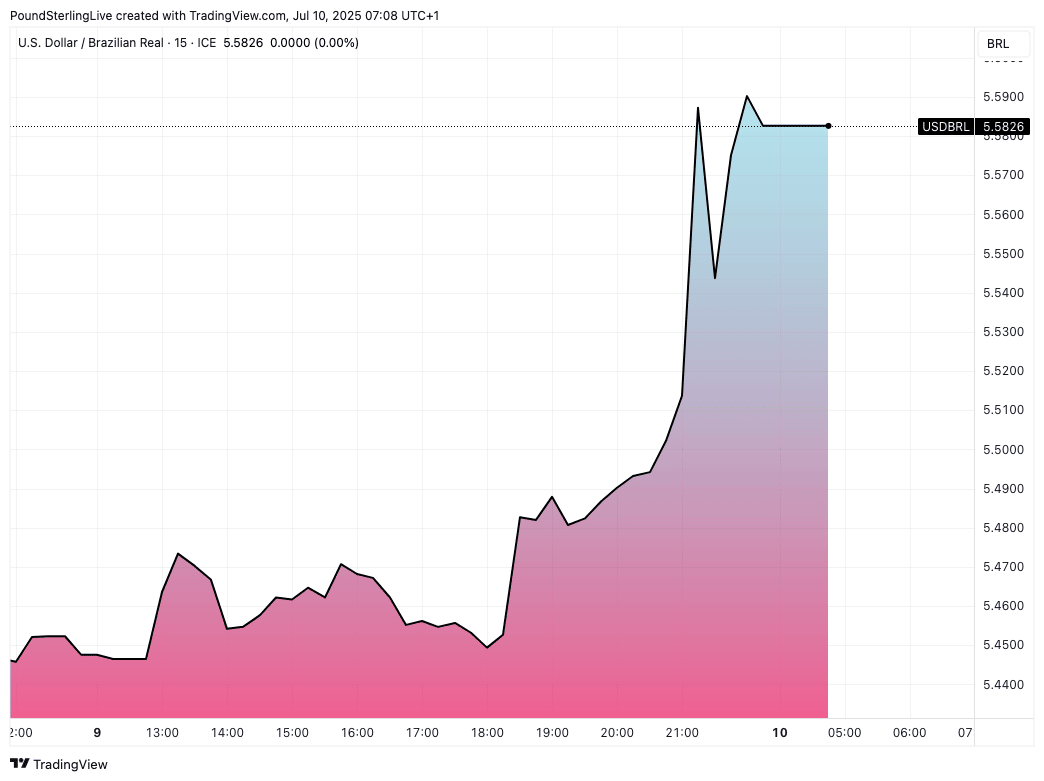
Trump greets Brazil’s President Jair Bolsonaro in 2020, upon his arrival to Mar-a-Lago in Palm Beach. Official White House Photo by Shealah Craighead.
Trump uses tariffs to try to influence Brazil's legal process.
The unpredictability of U.S. trade policy will remain beyond the August 01 tariff deadline; this can't be good for the Dollar.
The U.S. Dollar has over recent days regained some composure, raising questions as to whether we are entering a period of strength that could last through the summer months.
However, not content with a day's worth of calm, U.S. President Donald Trump slapped a 50% import tariff on Brazil, by far the most severe of all tariffs announced.
Incredibly, the strength of the tariff had nothing to do with U.S.-Brazil bilateral trade; instead, it was to do with the ongoing criminal case involving ex-President Jair Bolsonaro.
"This is the highest tariff due to investigations against the former president. If Brazil were to accept Trump's argument, it would constitute interference in the independence of the judiciary of a democratic country," points out Michael Pfister, FX Analyst at Commerzbank.
Bolsonaro is on trial for allegedly attempting to stage a coup against the current president, Luiz Inácio Lula da Silva.
Trump sent Lula a letter on Wednesday night saying: "I knew and dealt with former President Jair Bolsonaro, and respected him greatly, as did most other Leaders of Countries. The way that Brazil has treated former President Bolsonaro, a Highly Respected Leader throughout the World during his Term, including by the United States, is an international disgrace. This Trial should not be taking place. It is a Witch Hunt that should end IMMEDIATELY."
The economic impact on Brazil of a 50% tariff is undeniable, which explains why the Real fell on the developments. However, it also indicates why Trump's broader tariff policy is bad for the U.S. economy (inflationary), and the Dollar.
The U.S. imported close to $2BN worth of coffee from Brazil in 2024, meaning U.S. consumers will feel the effect of this tariff. However, Brazilian exports to the United States are dominated by more value-added products, says Oxford Analytica, with manufactured goods accounting for over 78% of shipments to the U.S. Last year, Brazilian exports to the country totalled $40.4BN, amounting to 12% of total exports.

Above: The Real fell sharply against the Dollar.
Although the economic implications are notable, "I believe that the reasoning behind this is even more important," explains Pfister. "We have repeatedly been asked whether our view that Trump could use tariffs to achieve various political objectives is realistic. Yesterday's events have confirmed this impressively."
This week Trump delayed tariff deadlines to August 01, raising hopes that the matter of tariffs would soon fade in importance.
However, we have since seen the President impose a 50% tariff on copper imports, and now this tariff on Brazil over internal affairs.
Tariffs are a weapon that will be used again and again, which should impose a premium on the Dollar.
"Long-run, NOTHING has changed on our view for foreign managers to hedge their US Dollar assets more – and this will bring structural weakness to the US$ throughout 2025 and 2026," says Richard Cochinos, FX Strategist at RBC Capital Markets.
"This development is also by no means positive for the US dollar," says Pfister. "Trump is clearly trying to use tariffs to achieve various goals. Can we really be sure that we are safe from such attacks? After last night, I have my doubts."
